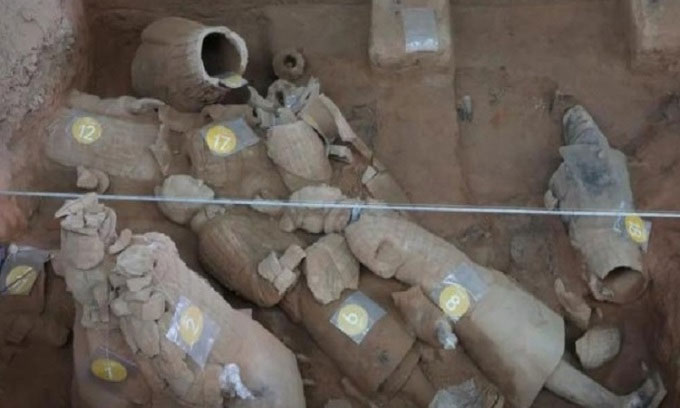Archaeologists discovered over 20 terracotta warriors on February 4th at several newly excavated locations in Pit 1 in Xi’an, the capital of Shaanxi Province.

Number of newly discovered terracotta figures in Pit 1. (Photo: Chinanews)
The colored ceramic statues found in this excavation are still in good condition, according to the Museum of the Terracotta Army of Qin Shi Huang. Currently, the research team has transported the ceramic figures to the restoration room.
The new batch of terracotta figures includes a statue of a general and a mid-ranking officer. Archaeologists discovered that the arrangement of warriors in Pit 1 may follow a symmetrical pattern from north to south and from east to west. This finding is significant for understanding and studying the army placed in the pit.
Pit 1 is rectangular, measuring 230 meters from east to west, 62 meters from north to south, and 5 meters deep, with a total area of 14,260 square meters. Based on estimated excavation density, it is possible to find over 6,000 ceramic figures and horses here.
The Terracotta Army is a collection of life-sized statues of soldiers and horses modeled after the army of Qin Shi Huang (259 – 210 BC), the first emperor of China, intended to protect him in the afterlife. Located near the tomb of Qin Shi Huang in Lintong, Shaanxi, the army was first discovered in 1971 and is one of the greatest archaeological finds of the 20th century. The Terracotta Army includes over 8,000 warrior statues in three pits located about 1.6 kilometers northeast of the tomb. Archaeologists have unearthed around 2,000 large statues that resemble real people, along with many weapons such as bows, spears, and swords, some of which remain intact to this day.


















































